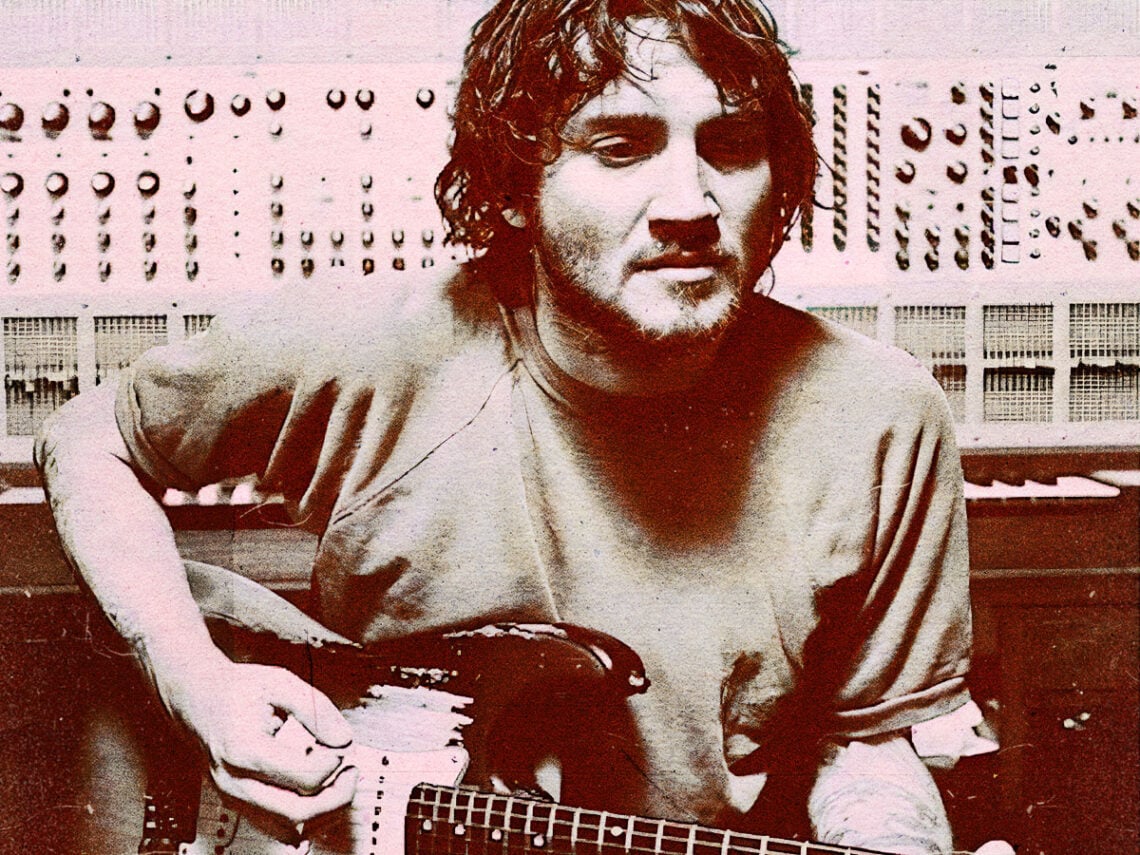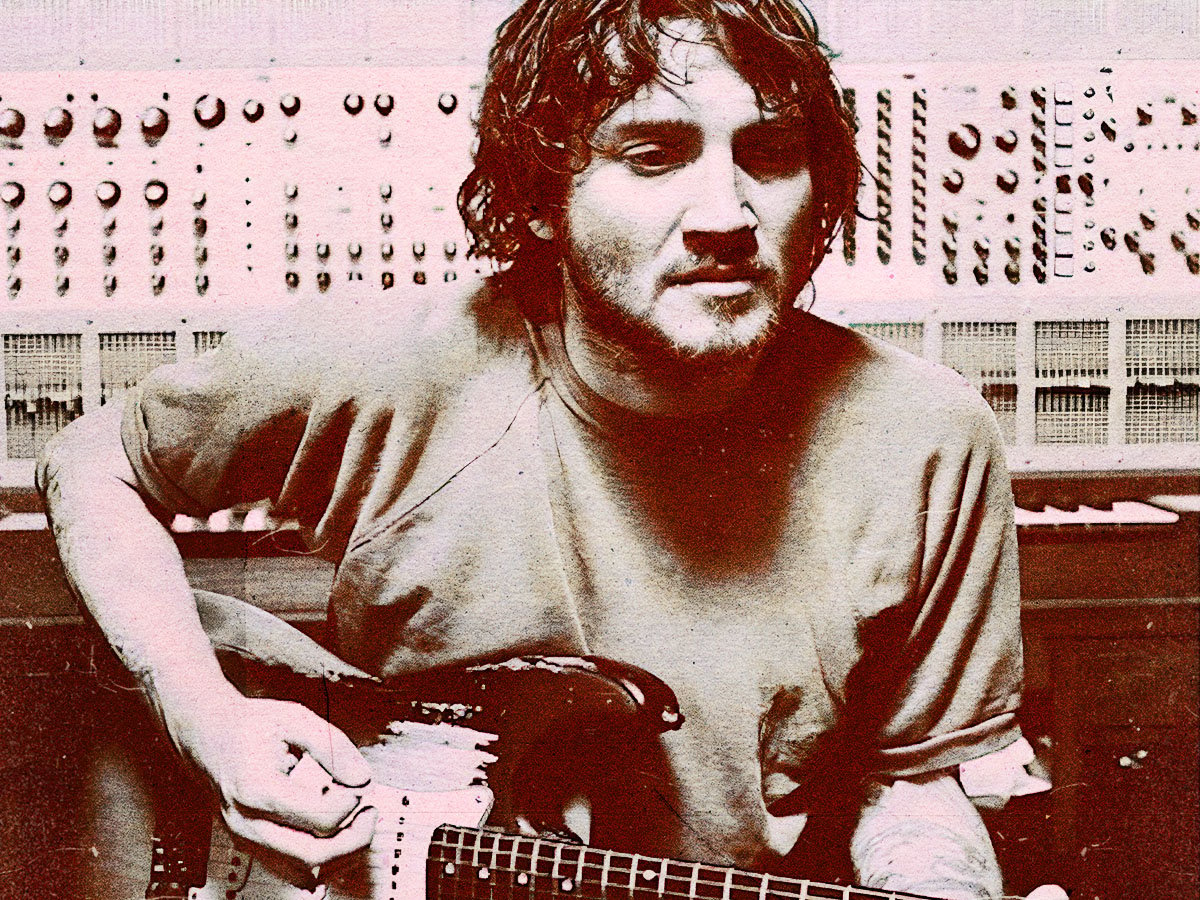
(Credits: Far Out / Album Cover)
Mon 2 June 2025 19:00, UK
When your bass player is running around naked and your lead singer is hopped up on every drug under the sun, there’s a level of pre-described arrogance required to play guitar in the Red Hot Chili Peppers. They were like a sonic wrecking ball in the 1990s, both in the studio and on stage, and whoever was manning the axe would have to wield it with extreme power and charisma.
John Frusciante had all of the necessary gusto to be the Red Hot Chili Peppers guitarist. In fact, he was arguably the main building block upon which the band built their tower of arrogance on. He was a master technician, almost like a Jimi Hendrix reincarnated, who played with the sort of style and presence necessary for a permanently topless LA band. Harnessing the lucid atmosphere of the Californian coastline, he played with the sort of subtle groove combined with a classic power that was, in essence, the heart of the band’s sound.
On their 1991 album Blood Sugar Sex Magik, his influence was stamped in bright red ink, sonically thrusting the band into a lane of their own whereby no other artist operated on their frequency. ‘Give It Away’ and Under The Bridge were musical representations of how important Frusciante was. He allowed the band to traverse high-brow technical rock and commercial pop, allowing songs with catchy chorus lines to break down into intricate melodic bridges led by his guitar lines.
But there was something in the Californian sun that enticed the band into flying too close. Ever since their emergence in the late 1980s, the band has been constantly flirting with danger, trying to harness their creative greatness through consistent drug use. For Frusciante, it simply got too much. In 1992, a then 20-year-old Frusciante had the wherewithal to notice his own path of destruction, fuelled by a severe heroin addiction, was expedited by the now global success of the band.
He explained that in the lead up to their Blood Sugar Sex Magik tour, he heard voices in his head telling him “you won’t make it during the tour, you have to go now”.
Later in a 2007 interview, he explained how this general attitude was simply informed by a subconscious dislike of the general hedonistic behaviour that existed within a band at that time. He said, “By the age of 20, I started doing it right and looking at it as an artistic expression instead of a way of partying and screwing a bunch of girls. To balance it out, I had to be extra-humble, extra-anti-rock star”.
When did John Frusciante next quit the Red Hot Chili Peppers?
And so after he departed in ‘92, the band were left somewhat in the creative lurch for another seven years while Dave Navarro filled in on guitar. The gulf in quality was apparent, and the influence Frusciante’s style had on the band’s musical identity was becoming increasingly clear. Flea’s bass lines became a heavily relied on member of the arrangement, but there was only so much a bass could do. The melodic complexity of what made the band so appealing in the first place was in fear of being lost.
So when the band were staring down the barrel of non-existence after firing Navarro in 1998, Flea told Kiedis: “The only way I could imagine carrying on is if we got John back in the band”. But by ‘98, Frusiciante had fulfilled his destiny and enjoyed a more holistic lifestyle. Drug-free and in good physical health, he was visited by Flea, who asked him to rejoin. The story goes that Frusciante replied, sobbing, “Nothing would make me happier in the world”.
The reunion confirmed the worst-kept secret in music: The Red Hot Chilli Peppers are simply half the band without Frusciante on guitar. In 1999, a holistically inclined guitarist showcased his brilliance, bringing a patient melodic delicacy to his return record, Californiacation. Two more legacy defining records soon followed on By The Way and Stadium Arcadium, with the latter celebrating one his finest solos in ‘Dani California’.
But once again, the lifestyle of a rock star proved to weigh heavy on the shoulders of the great guitarist, who spotted the signs of danger once again to avoid a complete tailspin. He said, “I became quite off-balance mentally those last couple of years we toured,” Frusciante said. “As the tour went on, I got deep into the occult, which became a way of escaping the mindset of tour life. The occult tends to magnify whatever you are, and I was an imbalanced mess.”
Kiedis recalled that “John was very absolute about not wanting to do this anymore…so when he told Flea and I, there wasn’t even that moment where we were, like, ‘Come on, we can work it out.’ We were, like, ‘We understand, it’s obvious it’s not where you want to be.’ I would say ‘relief’ was probably the most descriptive word for everybody, including John.”
And when did he rejoin?
In 2022, Chili’s fans had their prayers answered as the old band got back together once again for their albums Unlimited Love and Return Of The Dream Canteen. While neither record acted as their finest work by any means, it did show glimpses of the Chili’s of old, particularly on the opening track for Unlimited Love, ‘Black Summer’, which boasted a quintessential John Frusciante solo.
Their touring schedules and album releases are sparser than they once were, making the role of guitarist a more palatable and sustainable lifestyle for Frusciante. So with our fingers and toes crossed, he remains a member of the line-up today, but as the Californian sun continues to beat down hard on its favourite suns, the danger of a fallout will forever exist in its shadows.
Related Topics
Subscribe To The Far Out Newsletter

